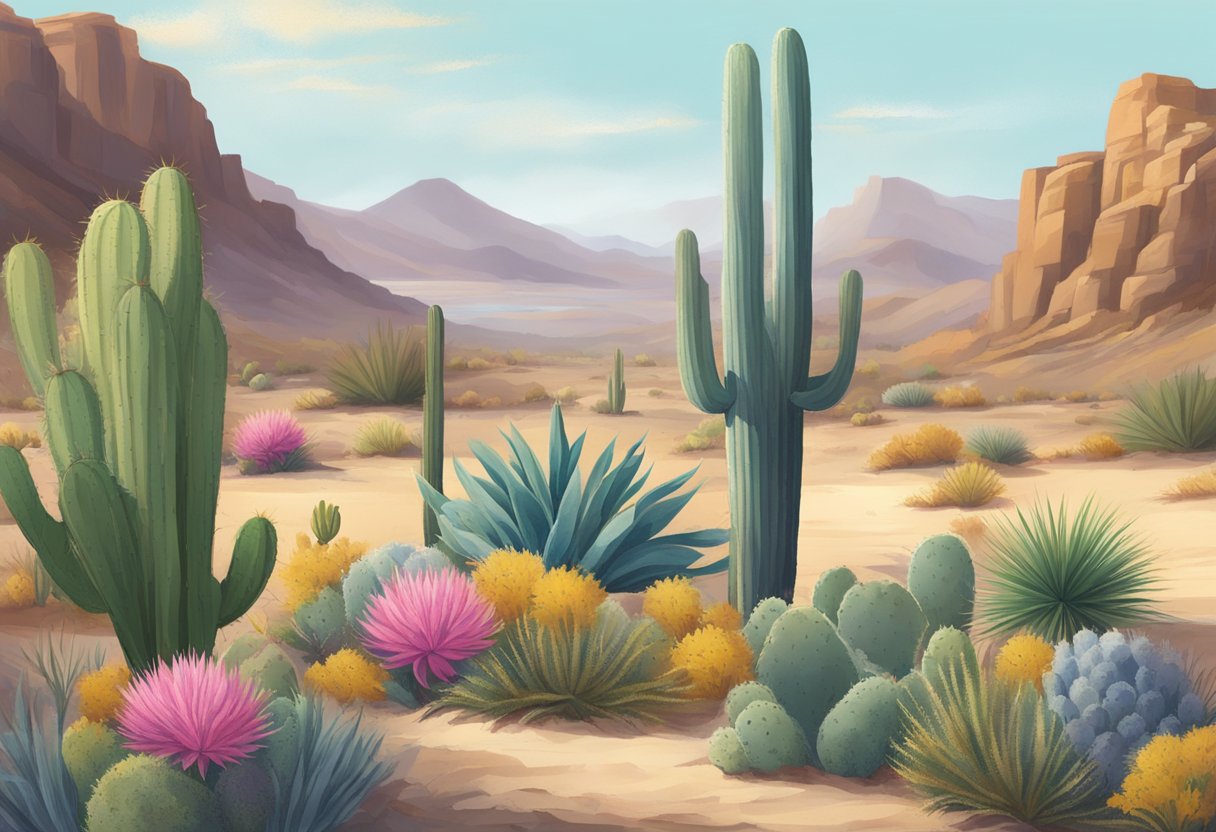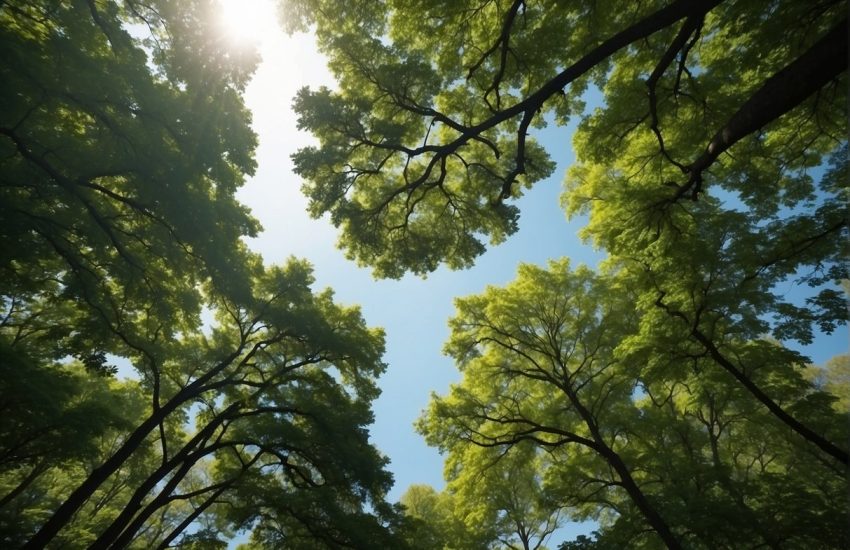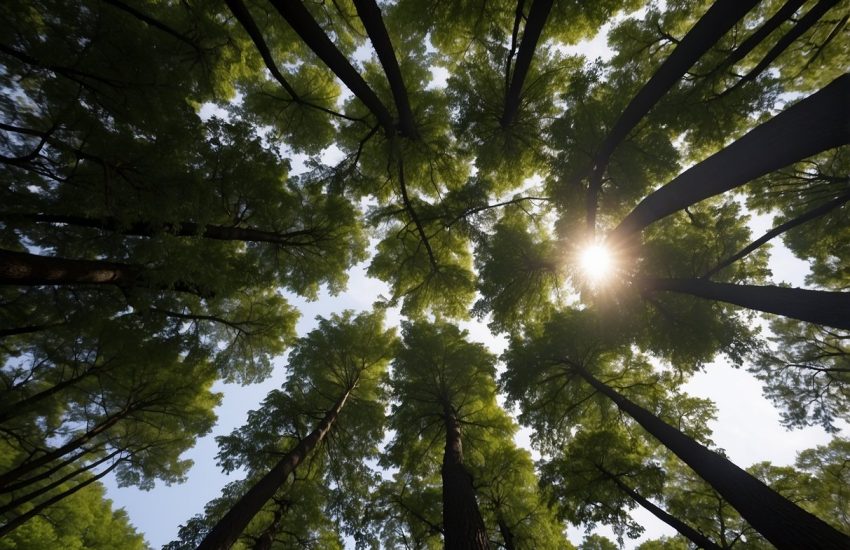Desert Flora: An Overview of Plant Life in Arid Environments
Deserts are known for their harsh and arid environments, where very few living organisms can survive. However, the flora that does manage to adapt to these conditions is fascinating and unique. Desert flora is an important part of the ecosystem, providing food and shelter for a variety of animals.

Desert flora has evolved to thrive in the extreme conditions of arid environments. These plants have adapted to survive with very little water, often by developing deep root systems or storing water in their leaves and stems. Some desert plants have also developed physical adaptations, such as spines or thorns to deter predators and to reduce water loss through transpiration.
Despite the challenges of living in the desert, there is a surprising diversity of flora in these ecosystems. From cacti to succulents, wildflowers to shrubs, desert flora provides a unique and beautiful landscape. Understanding the adaptations and survival strategies of desert plants is not only fascinating but also important for conservation efforts in these fragile ecosystems.
Desert Flora Types and Adaptations
Desert regions are home to a diverse range of vegetation, including cacti, succulents, trees, shrubs, grasses, and wildflowers. These plants have adapted to the harsh desert environment by developing unique features that allow them to survive in extreme conditions.
Cacti and Succulents
Cacti and succulents are perhaps the most iconic desert plants, known for their spiny and fleshy leaves that store water. The saguaro cactus, barrel cactus, and prickly pear cactus are common examples of cacti found in the desert. These plants have adapted to the arid environment by reducing their surface area to minimize water loss and by developing shallow roots that can quickly absorb water after a rainfall.
Trees and Shrubs
Trees and shrubs are also found in the desert, including the Joshua tree, creosote bush, and mesquite. These plants have adapted to the desert by developing deep roots that can access water deep underground. Some trees, such as the acacia, have also developed thorns to protect themselves from herbivores and to reduce water loss through transpiration.
Grasses and Wildflowers
Desert grasses and wildflowers are often overlooked but are an important part of the desert ecosystem. The desert lily, California poppy, brittlebush, and saltbush are just a few examples of the many species of grasses and wildflowers found in the desert. These plants have adapted to the desert by developing deep roots that can access water, and some have also developed a waxy coating on their leaves to reduce water loss.
In conclusion, desert plants have adapted to the harsh desert environment by developing unique features that allow them to survive in extreme conditions. From cacti and succulents to trees, shrubs, grasses, and wildflowers, the desert is home to a diverse range of vegetation that plays an important role in the ecosystem.
Desert Flora Ecosystems and Conservation

Deserts are harsh environments with unique ecosystems that support a wide range of flora and fauna. The survival of desert flora is dependent on various factors such as water availability, temperature, and soil conditions. In recent years, the conservation of desert flora has become a priority due to the increasing threat of climate change and human activities.
North American Deserts
North America is home to three major deserts: the Mojave, Sonoran, and Chihuahuan deserts. These deserts have a diverse range of flora and fauna, including the iconic Joshua tree (Yucca brevifolia) and creosote bush (Larrea tridentata). The Sonoran Desert is known for its giant saguaro cactus, while the Chihuahuan Desert is home to the rare and endangered Chihuahuan hookless cactus.
The conservation of desert flora in North America is critical due to the rapid urbanization and development of desert regions. The establishment of protected areas and conservation programs has helped to preserve the unique biodiversity of these ecosystems.
Deserts Around the World
Deserts are found in various regions around the world, including the Sahara, Namib, Atacama, Australian, Central Asia, Southern Africa, and the Middle East. Each desert has its unique flora and fauna, adapted to the harsh environmental conditions.
Water is a scarce resource in most deserts, and plants have adapted to survive in arid conditions. Some desert plants have deep root systems that allow them to access groundwater, while others have developed mechanisms to store water in their tissues.
Conservation efforts in desert regions around the world have focused on protecting endangered species and their habitats. The establishment of protected areas, such as national parks and wildlife reserves, has been crucial in preserving desert ecosystems.
Insects, birds, and reptiles are also an essential part of desert ecosystems, playing critical roles in pollination, seed dispersal, and predator-prey relationships. The conservation of these species is essential for the overall health and sustainability of desert ecosystems.
In conclusion, the conservation of desert flora is crucial for the preservation of unique and fragile ecosystems. The establishment of protected areas and conservation programs has helped to mitigate the impact of human activities and climate change on these ecosystems.


